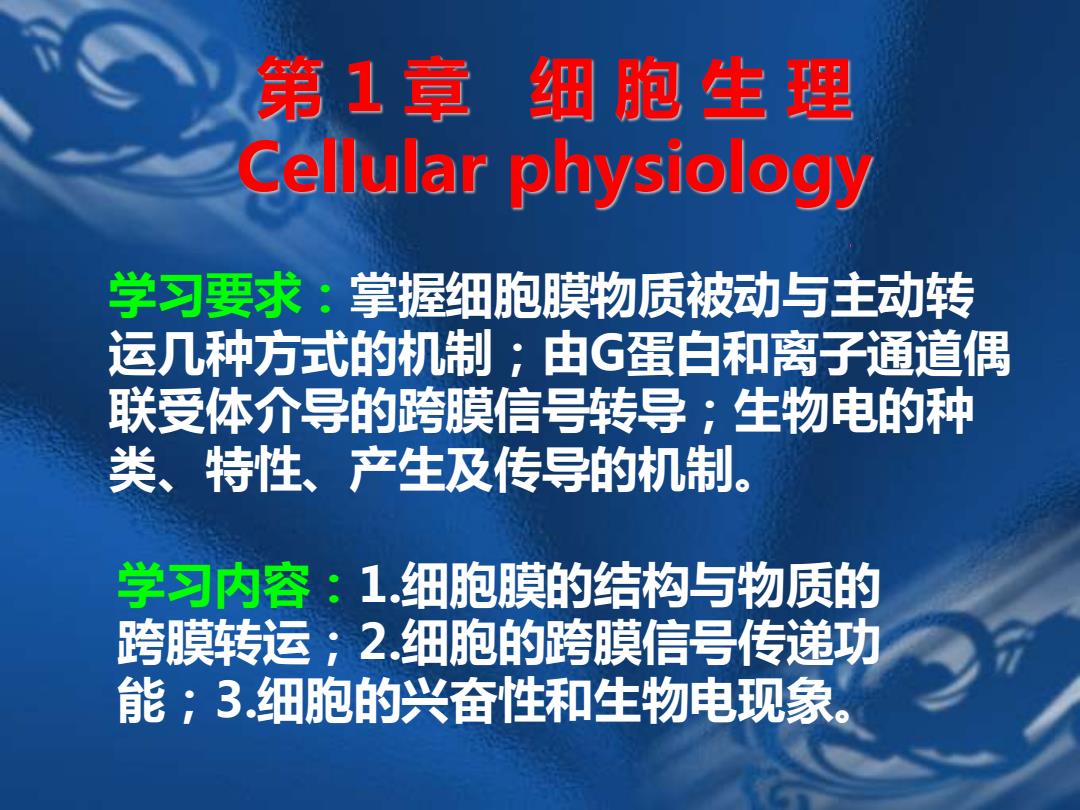
第1章细胞生理 Cellular physiology 学习要求:掌握细胞膜物质被动与主动转 运几种方式的机制;由G蛋白和离子通道偶 联受体介导的跨膜信号转导;生物电的种 类、特性、 产生及传导的机制。 学习内容:1.细胞膜的结构与物质的 跨膜转运;2.细胞的跨膜信号传递功 能;3.细胞的兴奋性和生物电现象
第 1 章 细 胞 生 理 Cellular physiology 学习要求:掌握细胞膜物质被动与主动转 运几种方式的机制;由G蛋白和离子通道偶 联受体介导的跨膜信号转导;生物电的种 类、特性、产生及传导的机制。 学习内容:1.细胞膜的结构与物质的 跨膜转运;2.细胞的跨膜信号传递功 能;3.细胞的兴奋性和生物电现象
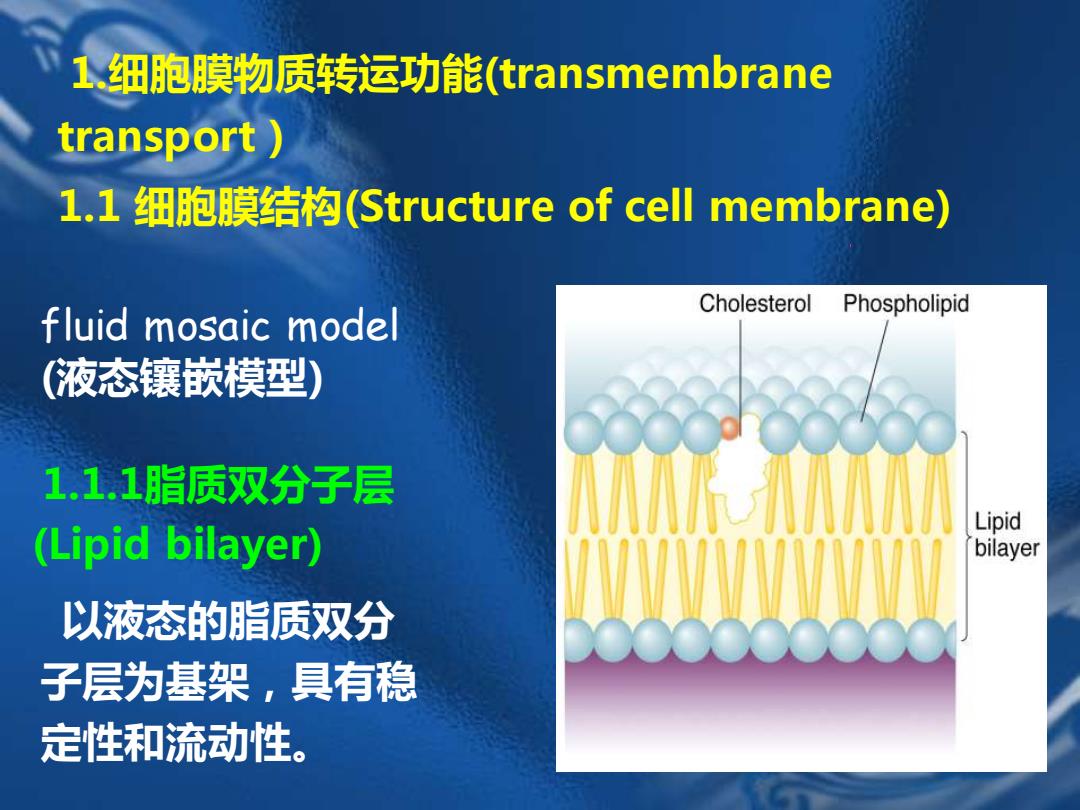
1.细胞膜物质转运功能(transmembrane transport 1.l细胞膜结构(Structure of cell membrane) Cholesterol Phospholipid fluid mosaic model (液态镶嵌模型) 1.1.1脂质双分子层 Lipid (Lipid bilayer) bilayer 以液态的脂质双分 子层为基架,具有稳 定性和流动性
1.1.1脂质双分子层 (Lipid bilayer) 以液态的脂质双分 子层为基架,具有稳 定性和流动性。 1.细胞膜物质转运功能(transmembrane transport ) 1.1 细胞膜结构(Structure of cell membrane) fluid mosaic model (液态镶嵌模型)
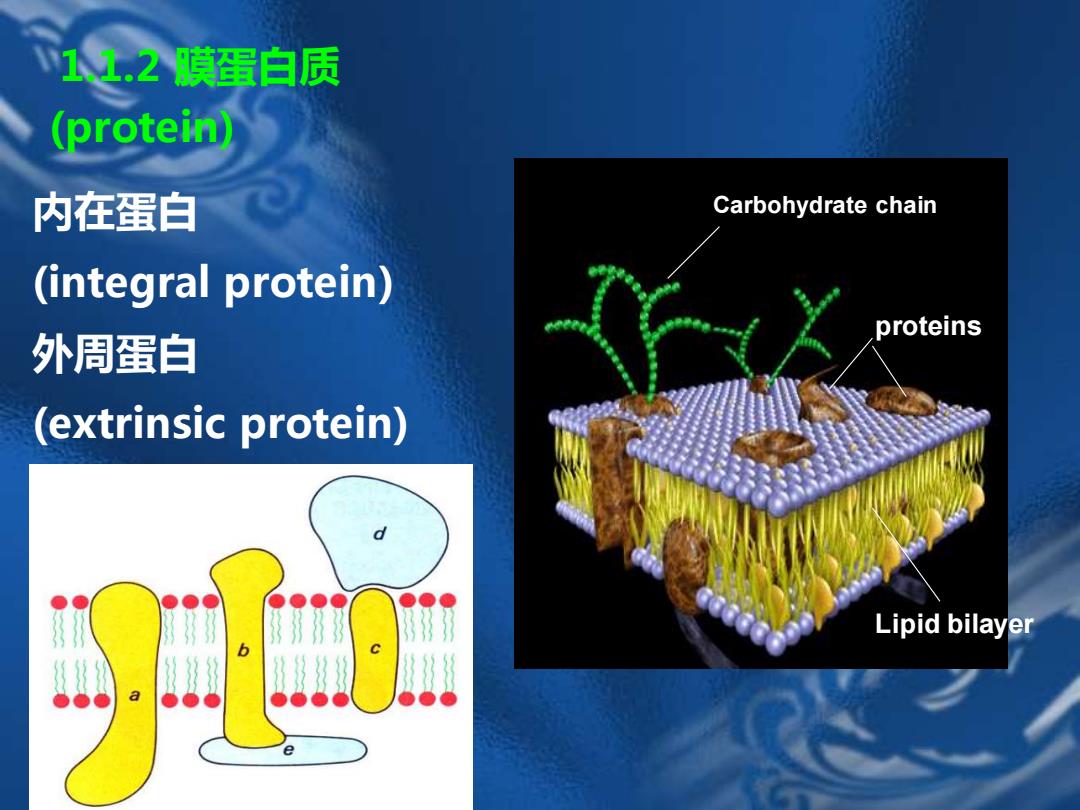
11.2膜蛋白质 (protein) 内在蛋白 Carbohydrate chain (integral protein) proteins 外周蛋白 (extrinsic protein) Lipid bilayer ●● a ●0 ●●● e
1.1.2 膜蛋白质 (protein) 内在蛋白 (integral protein) 外周蛋白 (extrinsic protein) Carbohydrate chain proteins Lipid bilayer
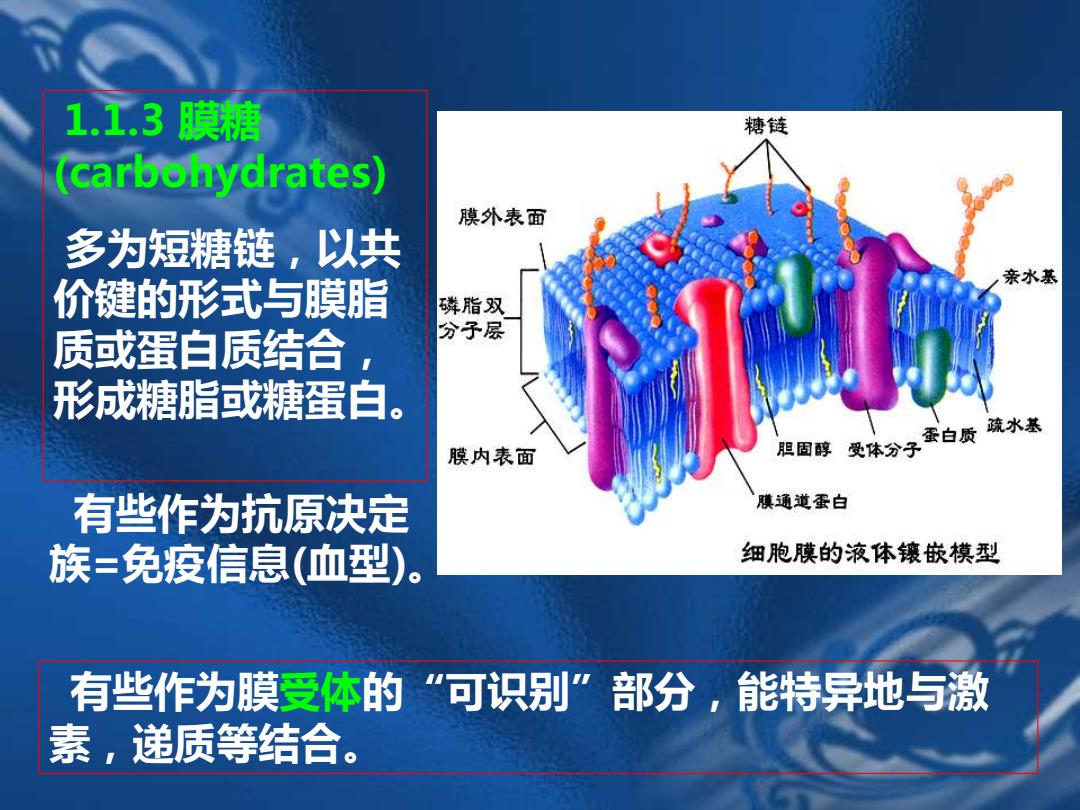
1.1.3膜糖 糖链 (carbonydrates) 膜外表面 多为短糖链,以共 亲水基 价键的形式与膜脂 磷脂双 质或蛋白质结合, 分子层 形成糖脂或糖蛋白。 曼体分子蛋白质 疏水基 膜内表面 胆固醇 有些作为抗原决定 膜通道蛋白 族=免疫信息(血型) 细胞膜的液体镶嵌模型 有些作为膜受体的“可识别”部分,能特异地与激 素,递质等结合
有些作为抗原决定 族=免疫信息(血型)。 1.1.3 膜糖 (carbohydrates) 多为短糖链,以共 价键的形式与膜脂 质或蛋白质结合, 形成糖脂或糖蛋白。 有些作为膜受体的“可识别”部分,能特异地与激 素,递质等结合
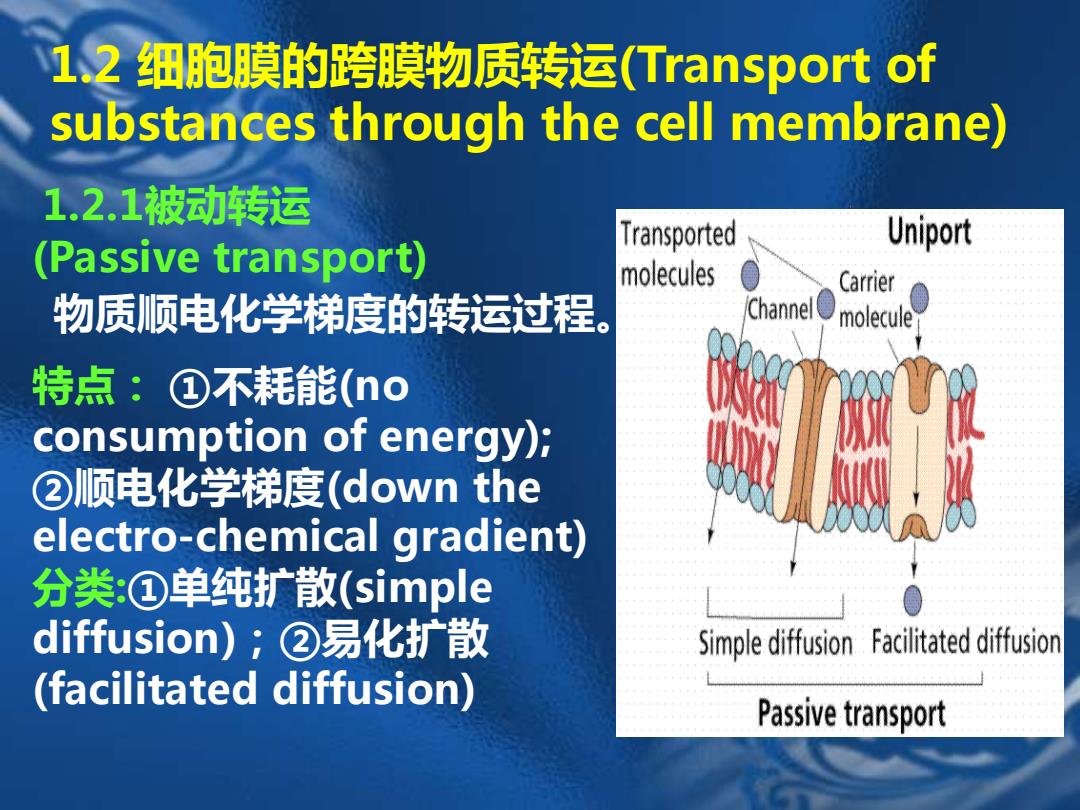
1.2细胞膜的跨膜物质转运(Transport of substances through the cell membrane) 1.2.1被动转运 (Passive transport) Transported Uniport molecules 物质顺电化学梯度的转运过程。 Carrier● Channelmolecule 特点:①不耗能(no consumption of energy); ②顺电化学梯度(down the electro-chemical gradient) 分类:①单纯扩散(simple diffusion);②易化扩散 Simple diffusion Faclitated diffusion (facilitated diffusion) Passive transport
1.2 细胞膜的跨膜物质转运(Transport of substances through the cell membrane) 物质顺电化学梯度的转运过程。 1.2.1被动转运 (Passive transport) 特点: ①不耗能(no consumption of energy); ②顺电化学梯度(down the electro-chemical gradient) 分类:①单纯扩散(simple diffusion);②易化扩散 (facilitated diffusion)